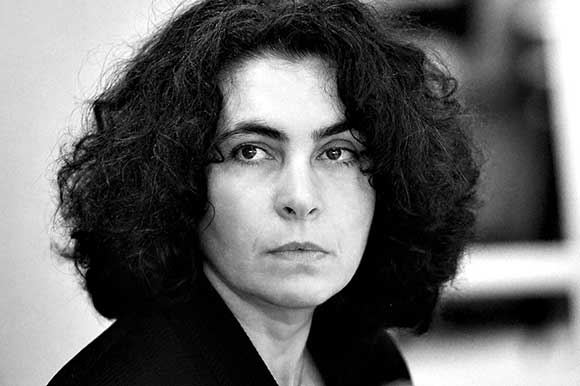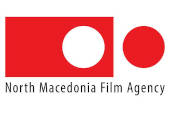FNE: What can you tell us about the history of Georgian animated films?
 Mariam Kandelaki: Animation emerged in Georgia in the 1920s. However, the first animations can hardly be qualified as films: they were cartoons made for the purpose of Bolshevik propaganda. The first proper animation films were created in 1929, when the authorities commissioned director Kote Mikaberidze to make a satirical film that would criticise excessive bureaucracy: My Grandmother (Chemi Bebia, 1929). At the time, many such film-satires were produced in the Soviet Union, but Mikaberidze managed to turn this banal propaganda film into a cinematographic work of high artistic value and unique aesthetics. He established an organic link between live acting and animated characters. Various types of animation are used in the film: stop-motion, drawing on cell, and cutout technics. Even now this film makes interesting viewing, yet this masterpiece infuriated the Soviet censorship. Until the 1960s the film was “under arrest", and Mikaberidze was deprived of the right to make films.
Mariam Kandelaki: Animation emerged in Georgia in the 1920s. However, the first animations can hardly be qualified as films: they were cartoons made for the purpose of Bolshevik propaganda. The first proper animation films were created in 1929, when the authorities commissioned director Kote Mikaberidze to make a satirical film that would criticise excessive bureaucracy: My Grandmother (Chemi Bebia, 1929). At the time, many such film-satires were produced in the Soviet Union, but Mikaberidze managed to turn this banal propaganda film into a cinematographic work of high artistic value and unique aesthetics. He established an organic link between live acting and animated characters. Various types of animation are used in the film: stop-motion, drawing on cell, and cutout technics. Even now this film makes interesting viewing, yet this masterpiece infuriated the Soviet censorship. Until the 1960s the film was “under arrest", and Mikaberidze was deprived of the right to make films.
In 1936 Vladimer Mujiri gathered talented people and made the short black-and-white animation Argonauts (Argonavtebi / Kolkheti); in 1939 this was followed by the 2D animation A Worthy Answer (Chiora).
In the 1950s and 1960s numerous people came to animation from painting and from feature films: Shalva Gedevanishvili, Temo Mikadze, Arkadi Khintibidze, Boris Starikovski, Vakhtang Bakhtadze, Otar Andronikashvili, Mikheil Chiaureli, Gabo Lavrelashvili and Karlo Sulakauri. Their works are based on Walt Disney’s animation school. In this regard, special mention should be made of the films made by Khintibidze: Jay Wedding (Chkhikvta qortsili, 1957), Enmity (Mtroba, 1958), Tsuna and Tsrutsuna (1961) and Half-Chicken (Nakhevartsitsila, 1962), based on Georgian literature and folklore.
The only director who worked in the field of stop motion animation was Karlo Sulakauri. He came to animation from puppet theatre and created many short puppet films, as well as the first puppet series Salamura’s Adventures (Salamuras Tavgadasavali, 1975-79).
By the end of the 1960s, a third generation of animators appeared: Bondo Shoshitaishvili, Mikheil Bakhanov and Ilo Doiashvili. They were the first professional animators, who graduated from the Film Institute in Moscow (VGIK). The appearance of this generation was vital for Georgian animation, and the filmmakers created really beautiful films, including Mikheil Bakhanov’s Ra-Ni-Na (1974), a creative piece full of life and made with minimal technical efforts; and Bondo Shoshitaishvili’s Prisoner (Tusagi, 1984), and Some Little Men (Katsunebi, 1978). These films are characterised by refined narration, humor, and in certain cases, soft sarcasm, and received numerous prizes at festivals.
The next generation of animators appeared at the beginning of the 80s. Film directors Tamaz Gomelauri and Gela Kandelaki established a five-year training course in animation directing at the Shota Rustaveli Institute of Theater and Cinema. This experiment was successful and in 1982 five young graduates started to work in the field of animation: Rezo Gvarliani (Tramp/Macancala, 1987, Hunter/Monadire, 1985); Dato (David) Takaishvili (Raven/Korani, 1981, Plague/Chiri,1983, Babilina,1987, Expectation/Molodini, 1989), Lado Sulakvelidze (Portrait/Portreti, 1981, The Land Demands its Due/Mica tavisas moitxovs, 1983, Coming/Modis, 1988); Dato Sikharulidze (Goose Tasiko/Bati tasikos tavgadasavali, 1985, Babajana (1988), Jacob Gogebashvili’s Life and Statesmanship/Iakob Gogebashvilis cxovreba da mogvaceoba, 1999); and Levan Chkonia (Baltanosaur/Baltanozavri, 1983, Bo-Bo, 1986). They brought new vision and ideas to the art of animation. They try to grasp the psychology of their characters, which often demands a change in the style of animation and the search for new methods. They attracted the attention of professionals, and the public at large, as was evident from the award for Best Short to the film Plague at the Cannes International Film Festival in 1984.
FNE: Tell us about the Georgian Animators Association. What projects and activities do you implement each year?
Mariam Kandelaki: In recent years, an animation revival has begun in Georgia, the interest in this field has increased, and separate small studios have been set up. The idea of creating a common information system naturally arose in order to jointly develop the animation industry in Georgia and share experiences with each other.
Saqanima has multifaceted work plans: establishing high artistic values in young Georgian animators, producing animation films, publishing animation books and distributing them, joint viewing and analysis of annual Georgian animation products, and arranging seminars and supporting festivals. We also plan intensive educational activities including animation film production trainings and participation in exchange programmes; assisting in the creation of educational animation films and serials; dissemination of animation art in Tbilisi and other regions; popularisation of Georgian animation in foreign countries; and holding retrospectives of Georgian animation films within the framework of various festivals and events around the world.
FNE: What is the current situation with the production of Georgian animated films?
Mariam Kandelaki: Unfortunately for Georgia, during the difficult 90s when everything stopped, the production of animation films stopped as well, but what did not stop was the developing of ideas for new films and working on scripts. In 2010 when the GNFC started funding animation projects, many interesting films were created with a big success at international festivals. Unfortunately, funding is very scarce, but it is expected that the Georgian government will see the success of Georgian animation films and increase financial support in the future. In recent years, small animation studios have been established, not only in the capital but also in regions such as Telavi, Nikozi and Batumi. There are three international animation film festivals: TIAF, Tofuzi and Nikozi. We see great potential in Georgian youth, and we try to support them in every way.
FNE: Tell us about the successful animated films of recent years. You are the producer of Ana Chubinidze's animated film The Pocket Man, which has won awards at about twenty festivals around the world.
Mariam Kandelaki: In recent years, interesting animation films have been created in Georgia. They are made with completely different themes and techniques. These films have achieved great success at various festivals around the world: Gravity by Jumber Takaladzi (KvaliXXI), Granny by Sandro Katamashvili (20Steps Productions), Confession of The Wolf by Rati Naneishvili (KvaliXXI), Van Gogh’s Last Letter by Paata Shengelia (KvaliXXI), Lile by Natia Nikolashvili (20Steps Productions), Gino by Dato Kiknavelidze (Lira Production Studio), The Youth And The Leopard by Mariam Kandelaki (KvaliXXI), The Kite by Lado Sulakvelidze, A Little Beetle by Elene Sebiskveradze, The Tomato, Chai and Night Session by Petre Tomadze (Mifasi Animation), and Sunset and The Fisherman And The Girl by Mamuka Tkeshelashvili (20Steps Productions).
Ana Chubinidze is a book illustrator and The Pocket Man is her first animation project, which she developed in our workshop in 2015. As the best project in the workshop, she was granted the prize of traveling to Annecy and presenting her project at MIFA. While there, the well-known producer Corrine Destomber from the famous French animation company Folimage was interested in our project and we made the first Georgian (Kvalixxi) French (Folimage) and Swiss (Nadazdy Films) animation coproduction. The film has participated in almost 200 festivals around the world and won 25 prizes. It is also very important that it had a theatrical release for three months at 185 cinemas in France.
Our new, artistically interesting animation film Abandoned Village, a debut by Mariam Kapanadze and produced by Kvalixxi, will have its world premiere at the NEW CHITOSE Airport International Animation Festival 2020 in Hokkaido, Japan. It will be a good start of festival life for this film.
FNE: You have already announced the call for the 6th Animation Film Project Development/Pitching Training. What can you tell us about the collaboration between Georgia and The Annecy International Animated Film Festival? Tell us about the releases of the past years and the possibilities of this project.
Mariam Kandelaki: I attended the Annecy Festival for the first time in 2014 and in September of the same year its Artistic Director Marcel Jean visited us at the Nikozi Festival in Georgia with a programme of the best Annecy Festival films. Since we have been collaborating with Veronique Encrenaz Head of MIFA and Geraldine Bache head of Projects MIFA, every year we visit France with new projects and films and they have traditionally participated in the Nikozi Festival every year with The Best of Annecy film programme.
Together with MIFA Annecy festival market, Georgian Film-Abkhazeti’, with the support of the French Institute of Georgia and the GNFC, we will hold the 6th Animation Film Project Development/Pitching training this year. As a result of the competition, six animated film projects will be selected by the experts. French Producer Olivier Catherin will be in Tbilisi and from 28 September to 2 October and will conduct a five-day training for the authors of six selected projects. As a result of the trainings, one best project will be selected by the international experts, which will be presented at the MIFA market of Annecy Festival in June 2021. We have two pieces of news this year. One is that animators from Armenia are also eligible to take part in the competition. ReAnimania Yerevan Animated Film Festival will help finance expenses of the winning participant from Armenia. Second is that the French organisation NEF (nouvelles écritures pour le film d' animation) has a one-month residency programme for animators and the best project of our workshop will receive the Fontevraud Residency for the year 2021.
In recent years, a total of about 60 projects have entered the workshop competition, 30 of which have undergone training. Each winning project has found a foreign partner with our support. This workshop helps young animators to create interesting films by European standards.
FNE: Tell us about the future plans of the Georgian Animators Association and the International Animation Film Festival Nikozi. The festival has been postponed until next year.
Mariam Kandelaki: In collaboration with Film Center Georgian Film – Abkhazeti, we plan to hold the annual international conference The Art of Animation: Yesterday and Today on 4 and 5 October in Tbilisi. The theme of our conference is the problems and challenges in the field of modern animation, and aims to create a platform within which leading art critics, film critics, producers, TV editors, psychologists and educators will have the opportunity to share their own experiences. The American Scientific Publishing House Nova Science Publishers plans to publish and distribute electronic conference and printed materials in English. The publishing house will also distribute the books in world scientific libraries. Due to the Covid-19 pandemic, foreign speakers will be involved online this year.
According to the recommendations of the Ministry of Culture and the GNFC, Nikozi festival is obliged to postpone the 10th anniversary of the festival till September 2021 because of Covid-19. The festival has postponed its event with the hope for a better future.



















